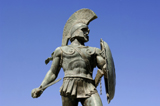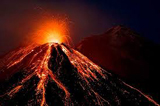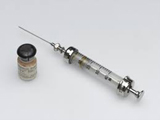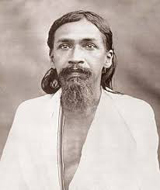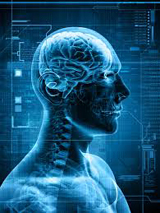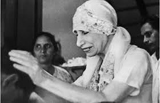Notes on counselling
A consciousness perspective of disability
Abstract
Society has changed its attitude towards the disabled from the times of ancient Rome and Sparta. This article tries to understand the phenomenon of disability from the itinerary of ‘waste’ as elaborated by Sri Aurobindo. His evolutionary paradigm also shows that the recalcitrant parts of the body have to be dealt with love and care so as to enhance receptivity to transformational changes.
For a long time children with disabilities, handicaps, developmental delays and deformations were considered to be an unwanted burden, a product of divine displeasure or a result of some hypothesised bad parental karma in some past life. Even the great Aristotle favoured a law that would not allow any deformed child to survive. In ancient Sparta, abandonment of deformed infants was a legal requirement enforced by the State regardless of parental wishes.
Society has become more humane in recent times. Moreover with parents opting for fewer offspring, the scenario is different to when larger households had less inhibition in dispensing with a disabled infant. One cannot however vouchsafe that unconscious death wishes are not harboured by otherwise commendable caregivers of chronically disabled, non-ambulatory subjects who have been bed-ridden since birth and need continual supervision. Given a choice, many pregnant women would opt for abortion if antenatal screening suggested disability. It is a hard fact that such disability imposes considerable psychological, social and financial burden on the family, drains out resources and deprives the non-disabled siblings of adequate parental care, love and attention.
Despite all these difficulties, parents, guardians and caregivers go on attending, nursing and loving disabled children, serving them without any great expectation. It has been found many times that at the demise of such disabled children, parents, usually mothers had a mixed response. On the one hand they felt gratitude to the Almighty as the child had been relieved from undesirable and unwanted suffering. On the other, they found it difficult to live with a vacuum in life as they had spent a lifetime sacrificing their own ambitions and pleasures to attend to the child and which had become a habit from which now they find it difficult to be dislodged even though they are now free from the burden of caregiving.
It is true that we have come a long way in changing our attitudes towards disability since the ancient times of Rome and Sparta. That in an age of hedonistic pleasure, we have been able to sustain and develop new models of caregiving which are a testimony to the degree of social maturity achieved in contemporary times. Doubtless to say, the values of compassion and love, improved standards of healthcare, appropriate legal safeguards and advanced technological support have all contributed to the enhancement of present-day caregiving norms.
There is however a deeper perspective which explains the raison-d’être of disability and the justification of caregiving as being preparatory to some larger goal of evolutionary nature. An appreciation of this perspective will enhance the quality of caregiving and counselling for disabled subjects.
A deeper perspective
A deeper consciousness perspective of disability needs an understanding of two key Aurobindonian concepts: The itinerary of ‘waste’ and the trajectory of an evolving body-consciousness in a transformational paradigm. As we shall see, the first concept leads to the other, giving a meaning to disability and pointing to its relevance in the cosmic scheme.
The itinerary of ‘waste’
Spiritual experience reveals that Reality invests every level of the creation with meaning and purpose. “Consciousness is not an unaccountable freak or a chance growth or a temporary accident in a material and inconscient universe (1).”
“Our existence is not a freak of some inconscient mechanical Force stumbling into consciousness nor an inexplicable activity on the surface of a blank Nothingness or an impassive inactive Infinite. There is a significance in our life, it moves towards a spiritual end, it fulfils the drive of an eternal reality (2).”
But this spiritual realisation leaves one question unanswered. If Existence has a meaning and purpose, if life has an aim and a goal, if evolution follows a progressive curve, if growth implies a movement from Inconscience to Superconscience, then it is difficult to conceive why we have so much waste in nature.
There is a waste of energy, a waste of resources, a waste of the intellect, a waste of life, a waste of time! There is a ‘waste’ at every level of creation, at every plane of consciousness, in terrestrial as well as in individual life.
Consider the terrestrial existence. At the physical plane, we have the great natural calamities — the earthquakes, volcanoes, famines, tornados and tsunamis. We also have man-made disasters, accidents and mishaps that grow in proportion with our gadgets and inventions. At the vital plane, we have the great wars, the internecine conflicts, the ethnic clashes, and the mismatch of civilisations. Besides there is the sub-culture of crime and the parallel kingdoms of the mafia which lead to a huge deviation of resources. At the mental plane, we have the great conflict of ideologies, the imposition of the whims and fancies of one set of people over another. What a colossal waste of resources! That is how the self-styled representatives of humanity could be perpetrators of mass-annihilation.
The phenomenon of waste is also explicit in individual life beset with diseases, disabilities, congenital anomalies, chronic psychoses like schizophrenia and dementia besides the usual desires, passions, egoistic yearnings, dogmatic and stereotyped thinking that constitute a large part of ordinary life.
One wonders what would be the meaning of all this waste in Existence. Sri Aurobindo explains that, “... surface appearances are not the reality of things, they may be a part of the truth but they are not the whole reality. One must look beyond the external appearances of things before one can know things in themselves: especially first appearances are apt to be deceptive. It is not by regarding a flash of lightning as a chance ebullition of fiery temper in a cloud that one can know the truth of electricity. We must go far and dig deep before we can get at the truth about the Force that manifested the lightning (3).”
A hypothetical construct on waste
From the Aurobindonian perspective, the phenomenon of waste could be viewed from several perspectives:
a. At the onset, the very initiation of manifestation automatically implied that all possibilities should have an equal chance of manifesting. After all, what we label as ‘waste’ or ‘productive’ depends upon ‘values’ we impose. ‘Values’ emerged only when mind flowered in creation. A significant portion of values emerged after the mind had a ‘recoil’ from certain things, almost instinctively, for example, the ‘recoil’ from the phenomenon of ‘death’— a hard fact of life that is so difficult to accept.
The fact that all possibilities have an equal chance of manifesting gives equal weightage to both the ‘waste’ and ‘productive’ elements of existence. The wife of Alexander Wood who ‘invented’ the medical hypodermic syringe (that saves lives) was the first recorded subject to die from an injected overdose of morphine! Thus the productive and the ‘wasteful’ ramifications of the hypodermic syringe were implicit at the very moment of its invention!
However, instinct and intuition shifts our focus to what are considered as the ‘positive’ elements of existence. If we can accept anything in life, we should also accept our ‘natural’ instincts and ‘spontaneous’ intuitions. Spiritual experiences consolidate our intuitive aspiration for a growth in consciousness. Paradoxically, all elements that are considered to resist the growth of consciousness have a right to recur till an optimal point for their transcendence is reached.
The ‘right to recur’ and the ‘need for transcendence’ are equally important. An 18-month-old infant goes on repeatedly asking the same question because his sensory perception of different things needs to be consolidated. (Otherwise he would confuse an apple with a tomato.) At a certain point, he has to transcend that level for a higher-level consolidation of his growing cognitive grasp. If for any reason his mental growth is hampered, he will remain stuck at that level and will be labelled as ‘mentally challenged’. Suppose his mental growth has not been organically or structurally hampered, his IQ is normal, but he has not outgrown the habit of indulging in recurrent thoughts of the same kind. This then can become the genesis of what in later life can be labelled, as ‘obsessive’ thinking which also needs to be transcended. Imagine the amount of ‘waste’ of the quality of life that happens to both a mentally challenged subject with recurrent queries whose answers are never assimilated as well as an otherwise intelligent subject with recurring and repetitive thoughts who has been labelled to be suffering from obsessive-compulsive neurosis.
b. There are many elements that constitute ‘waste’ to our usual perception but in the cosmic design, they can serve a purpose and meaning. Thus it was a colossal waste of ‘intelligence’ and ‘judgement’ to crucify Jesus. But the consequences of that act humanised Europe, uplifted ‘love’ to glorious heights and made ‘forgiveness’ a virtue.
Sri Aurobindo explains, “We see only part of Nature’s purpose and all that does not subserve that part we call waste. Yet even our own human action is full of an apparent waste, so appearing from the individual point of view, which yet, we may be sure, subserves well enough the large and universal purpose of things. That part of her intention which we can detect, Nature gets done surely enough in spite of, perhaps really by virtue of her apparent waste. We may well trust to her in the rest which we do not yet detect (4).”
The clash between the lower and higher forces has been symbolised in all religions and traditions as the conflict between the Satanic and Divine forces. Sri Aurobindo gives a new twist to the clash, as he is not interested in a mere domination of the higher forces. His interest lies in the transformation of the lower, disruptive, disharmonious forces in the image of the higher, synthetic and harmonious forces. His Integral Yoga is an attempt to activate the forces of transmutation and transformation. It is only then what we label as ‘waste’ can find its rightful place in the cosmic scheme.
Trajectory of an evolving body-consciousness in a transformational paradigm
Behind everything is the huge waste of time. Imagine how many millions of years Nature had to waste to perfect the intricacies of physical beauty — the design on a butterfly’s wings, the delicacy of the rose petals and the colour of the flamingo! How many millions of years had to be spent to make our earth a fit habitation for supporting life! How many millions of years were needed to evolve the human being!
Yet of all creations in the manifestation, the human being is the most imperfect in relation to the qualities possessed. The rose is immaculate in beauty and the lion is gorgeously splendid in its stature. The human being is prone to a thousand and one imperfections because, Sri Aurobindo explains, that unlike the rose or the lion, man is a transitional being capable of a further evolutionary growth in consciousness. He is still a half-finished product, not representative of the highest consummation possible.
However once mind has blossomed in the evolutionary scale, there is going to be a paradigm shift in the evolutionary schemata. It is consciousness that will primarily evolve followed by corporeal changes. This evolution of consciousness will follow a transformational paradigm where the lower, imperfect, resistant and recalcitrant parts would be transformed into their higher integers.
One of the most challenging fields of the future evolution and transformation would be the arena of body consciousness. It has been described how the poise of the mind involved in the physical consciousness and enmeshed in the sensory schemata, named by Sri Aurobindo as the physical mind, has first to undergo the transformational change for “the physical mind was the instrument for direct action upon the most material (6).” In fact this change has to occur before the poise of the mind that deals with dynamic action and the poise dealing with cognition get transformed. The Mother has described how a hitherto unconscious cellular mind at the nethermost spectrum of the physical mind can get activated and move towards a transformational scheme (7).
Obviously a transformational agenda leading to a perfection of the body which would be ideal, healthy and free of disabilities would require a long time. The Mother has described how this transformed body would be characterised by “lightness, adaptability, plasticity and luminosity (8).” It would thus be resistant to disruptive changes.What could take a millennia could however be compressed in time with the facilitation of the spontaneous and natural evolutionary process by an intense spiritual endeavour that would work its way through a trajectory of consciousness.
The most important psychological requisite would be not to reject disabilities but to attend to them with care and love so that they can be offered to the Creative Spirit for being taken up for transformation in an evolved physical consciousness. In fact the appearance of a perfect human body can only be a milestone in a cosmic evolutionary scheme if the present prototypal body with its disabilities, deformities, inertia, and impurities gets transformed. A transformational agenda needs the most resistant, obscure, recalcitrant parts of the human body to come in front so that they can be worked upon. This is the rationale for an increasingly refined caretaking and counselling for disabled subjects so as to make even a defective physical consciousness to be evolutionally receptive to transmutational changes.
The Mother of course has assured that with an increasing receptivity in human consciousness, the transformational agenda can be accelerated.
References
1. Sri Aurobindo. Complete Works of Sri Aurobindo Volume 12. Pondicherry: Sri Aurobindo Ashram Trust; 2009 re-print, p. 320.
2. Ibid., p. 300.
3. Ibid., pp. 320-21
4. Sri Aurobindo. Birth Centenary Library, Volume 18. Pondicherry: Sri Aurobindo Ashram Trust; 1970, p.89.
5. Sri Aurobindo. SABCL, Volume 22; 1970, p. 493.
6. The Mother. Collected Works of the Mother, Volume 13. Cent. ed. Sri Aurobindo Ashram Trust; 1980, p. 63.
7. The Mother. Mother’s Agenda Volume 6. Paris: Institut de Recherches Évolutives; 1989 English translation, pp. 229-31.
8. The Mother. Collected Works, Volume 3; 1977, p. 175.
Dr. Soumitra Basu, a practising psychiatrist and member of SAIIIHR, is the Director of a school of psychology, Integral Yoga Psychology. He is also one of the editors of NAMAH.
Share with us (Comments,contributions,opinions)
When reproducing this feature, please credit NAMAH,and give the byline. Please send us cuttings.


